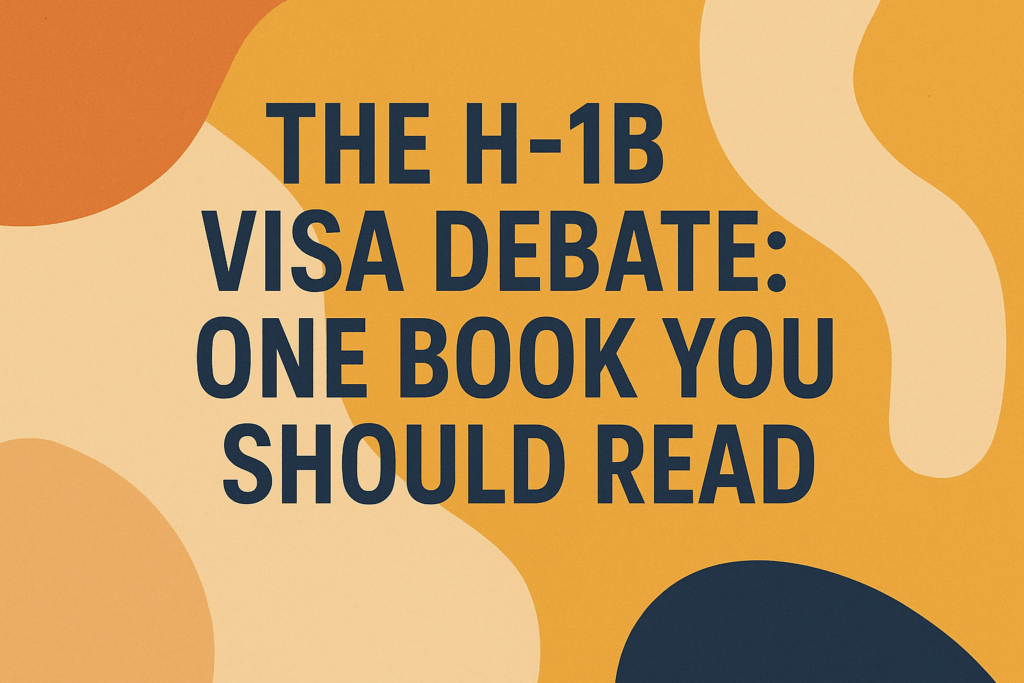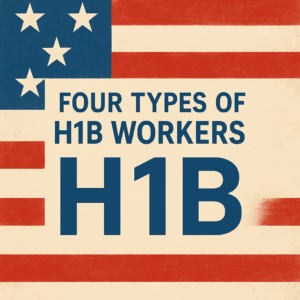A Powerful Story That Predicted the H-1B Crisis We’re Living Through Today
If you’ve been following the chaos around H-1B visas lately—the shocking $100,000 application fee, the proposed lottery changes, the midnight travel scrambles—you need to read From Slumdog to Software: The Price of an H-1B Dream by Abhimanyu Singh. I stumbled across this book last week, and I haven’t been able to stop thinking about it. Especially now, with everything exploding in the news.
Why This Book Hits Different Right Now
On September 19, 2025, President Trump dropped a bombshell: a $100,000 fee for new H-1B visa petitions. The announcement sent shockwaves through the tech industry, left families scrambling, and exposed just how precarious life is for over 500,000 foreign workers in America.
But here’s the thing—Singh’s book saw this coming. Not literally, but spiritually. He tells the brutal truth about the H-1B system that nobody wants to admit: it’s not a path to the American Dream. It’s a golden cage.
The Story That Will Break Your Heart
From Slumdog to Software follows Sumit, a brilliant kid from the Mumbai slums who claws his way out of crushing poverty through sheer determination and academic excellence. His childhood is gut-wrenching—competing for water at 4 AM, going to bed hungry, watching his father die of cancer because they couldn’t afford treatment, and then dealing with debt collectors threatening his family.
But Sumit is smart. Scary smart. He becomes the top student despite wearing torn uniforms and studying by candlelight. He dreams of America—the place where hard work supposedly matters more than your last name or caste.
The first half of the book reads like a survival thriller. You’ll find yourself holding your breath as this kid navigates a system designed to crush people like him. Every scholarship rejection, every unfair quota system, every rupee counted—it all builds to his desperate decision to pursue the only path available: the F-1 student visa to H-1B work visa pipeline.
The American Dream Becomes the American Trap
Here’s where Singh’s book becomes essential reading in 2025. He methodically exposes what the H-1B system actually is:
Not a pathway to citizenship—a trap door. With over 70% of H-1B holders being Indian citizens, and green card wait times stretching beyond 100 years for many Indians, you’re essentially signing up for permanent temporariness. Singh’s protagonist discovers this too late.
Not freedom—indentured servitude. Lose your job? You have 60 days to find another sponsor or leave the country. Can’t switch careers easily. Can’t start a business. Can’t negotiate fairly because your employer knows you’re trapped. The book doesn’t preach—it shows you through Sumit’s eyes what it feels like to live in that cage.
Not fair compensation—systematic underpayment. Singh details how companies exploit H-1B workers by paying them less than American colleagues, knowing they can’t easily quit. The White House proclamation itself cited cases of companies laying off thousands of American workers while simultaneously bringing in thousands of H-1B workers at lower wages.
Why I’m Recommending This Book Now
With DHS proposing a weighted H-1B lottery that prioritizes higher-wage positions, and implementation likely starting in March 2026 for the FY 2027 cap season, the system is becoming even more complex and cruel.
Reading Singh’s book right now feels prophetic. He wrote about a system that sells dreams and delivers nightmares. A system that tells brilliant immigrants “you’re welcome here” while systematically ensuring they can never truly belong.
The $100,000 fee? That’s just the latest chapter in the story Singh has been telling. It’s another barrier, another way to ensure that only certain people—people with the right kind of money, the right kind of employer, the right kind of luck—get to participate in “the American Dream.”
What Makes This Book Special
Singh doesn’t write like an activist with an agenda. He writes like someone who lived it (the book is labeled as fiction based on true events). The detail is precise—from the exact fees for applications to the specific forms you fill out, from the anxiety of the H-1B lottery to the crushing realization that your green card might arrive after you’re dead.
But what got me most was the human cost. Sumit’s journey from a Mumbai slum to a Silicon Valley desk should be inspiring. And it is—for about half the book. Then it becomes something else: a cautionary tale about what we’re willing to sacrifice, who we’re willing to become, and whether the price of admission is worth paying.
The Conversations We Need to Have
The debate about H-1B visas is heating up, with some economists arguing that cutting back on these visas has minimal impact on American employment while potentially stifling innovation, and others pointing to cases of displacement and abuse.
Singh’s book doesn’t pick sides in that debate. Instead, it centers the voices that usually get lost: the immigrants themselves. The people who paid $50,000-$80,000 for degrees, who live in constant visa uncertainty, who can’t visit dying parents because they might not be allowed back in, who pay Social Security taxes for a system they may never benefit from.
Who Should Read This Book
If you’re an H-1B holder or aspiring to be one—read this book. It won’t tell you what to do, but it will tell you the truth.
If you’re an American who wonders “why don’t they just do it legally?”—read this book. You’ll understand why “legally” often means “impossibly.”
If you’re a policy maker or employer involved with H-1B workers—especially read this book. Your decisions affect real people with real families and real dreams that you’ve got the power to help or crush.
If you’re just a human being who wants to understand one of the most misunderstood aspects of American immigration—read this book.
Final Thoughts
I picked up From Slumdog to Software expecting another immigrant success story. Instead, I got something rarer and more valuable: an honest account of what the H-1B dream actually costs.
In a month where families were separated as H-1B visa holders scrambled to reach the United States before new fees went into effect, and India’s Ministry of External Affairs warned of “humanitarian consequences”, Singh’s book feels both urgent and timeless.
The American Dream is still worth chasing. But as Singh shows us through Sumit’s story, we need to be honest about the price—and whether that price is fair.
This isn’t just a book. It’s documentation of a broken system, wrapped in a compelling human story. And right now, with H-1B visas dominating headlines and real people’s lives hanging in the balance, I can’t think of a more important book to read.
Rating: 4.3/5 stars
Available on: Amazon (search for “From Slumdog to Software” by Abhimanyu Singh) or https://www.amazon.com/dp/B0FVV1S79D
Recommended for: Anyone touched by the H-1B system, immigration policy enthusiasts, and readers who want to understand the real cost of the American Dream.
Trigger warnings: Extreme poverty, parental death, systemic discrimination, and the emotional toll of visa uncertainty.
Have you read this book? Are you living the H-1B experience yourself? Drop a comment below—I’d love to hear your thoughts and stories.
#H1BVisa #Immigration #BookReview #AmericanDream #TechImmigration #IndianImmigrants #TrumpImmigration #FromSlumdogToSoftware #MustRead #NonFiction










